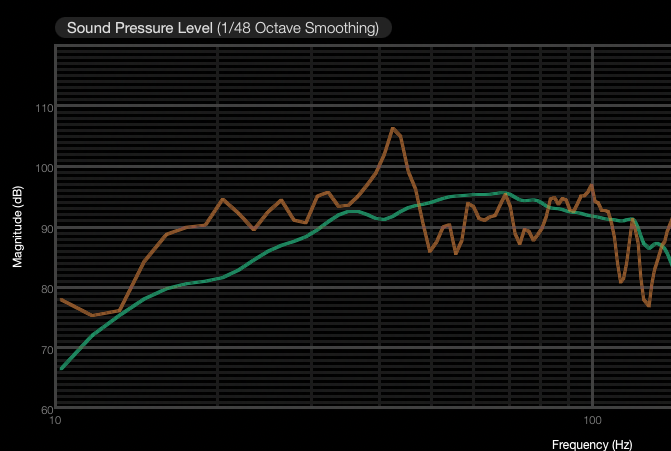Bass reproduction
The reproduction of low frequencies poses a special challenge for the loudspeaker. On the one hand, there needs to be enough diaphragm surface area and stroke, and on the other hand, the room plays a significant role in the reproduction of low frequencies. Below the so-called Schroeder frequency, the diffuse part of the reverberation in the room splits into individual room modes. This creates an interaction between the sound radiated by the loudspeaker and the room modes. For “normal” room sizes, we are talking about frequencies below about 200 Hz.
Necessary deepness
If the still audible frequencies down to 20 Hz shall be reproduced with full level, the loudspeaker would also have to be able to reproduce the 20 Hz with full sound pressure in an anechoic room. However, this requires very large diaphragms and/or very large excursion to produce a decent sound pressure at this low frequency, see also this article. With passive loudspeakers there is usually no possibility to adjust the bass according to the room frequency. Therefore, it makes sense to choose a gentle rolloff towards the 20 Hz in this case and not necessarily to pull the level linearly down as low as possible. Otherwise, the bass response becomes imprecise and tends to booming. For active speaker systems with DSP, it makes sense to adjust the bass response to the room. Only then can such a system show all its advantages in the bass range.
Modes and anti-modes
One can also talk about mountains and valleys or about superelevations and extinctions, which are created in space by parallel walls and are called room modes. While peaks in the frequency range can be corrected, this is not possible with cancellations. It is already in the word cancellation that it is useless to increase the level there, because the cancellation is still there. The speaker produces more stroke for nothing when this is attempted. You will be punished by a lower maximum level.

Frequency response in the bass range (10…120 Hz)
The green curve shows the level curve without the room, the orange curve at the listening position in the room. Although the level of the loudspeaker drops slowly from about 50 Hz, the full level is still present at the listening position at 20 Hz thanks to the contribution of the room acoustics.
Of course, the above example is a positive case and the rather close wall placement helps the positive effect of low bass boost. If there is a cancellation at around 30 Hz, it will only be possible to experience the full deep bass with a different set-up or listening position.
Although the loudspeaker (or subwoofer, if available) is primarily responsible for bass quality and quantity, the room has an important say. For the best bass reproduction it makes sense, even with an optimized arrangement in the room, to at least attenuate the room modes by means of DSP. You are compensated with a much more precise bass reproduction.
In another article I will explain how the unevenness can be linearized by means of DSP, respectively which measures are useful at all.
